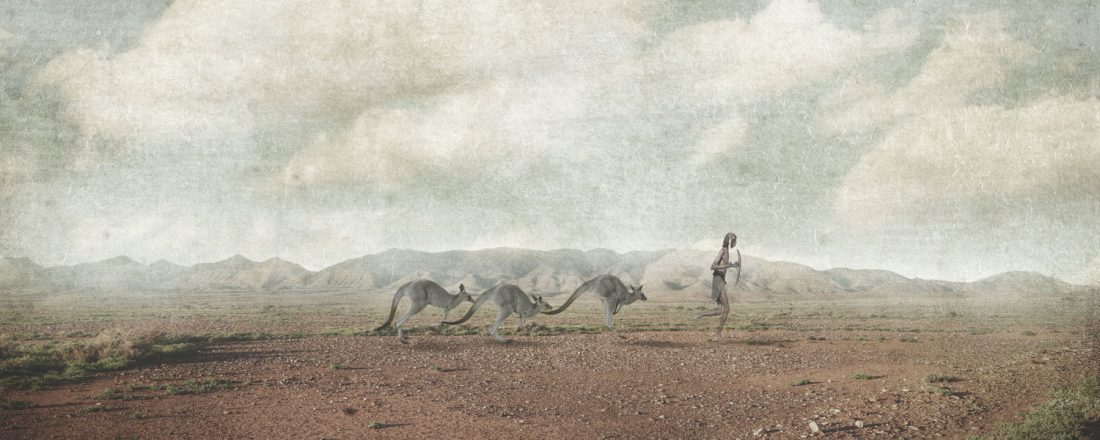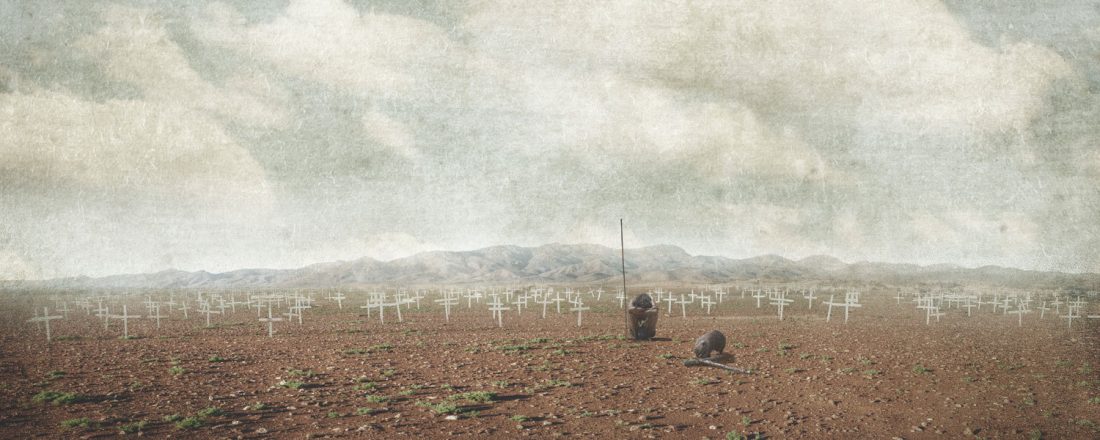Stickman
Stickman is the term for the elongated depiction of figures in cave paintings, interestingly this treatment extends internationally - a somewhat universal perception of man drawn by man.
In these Stickman works, the limbs of the photographed figures are stretched, and the stickman is also rendered translucent at times, like a memory, a ghost, or a poignant presence of what has gone before.
Static images are interspersed with figures that embody movement, all in front of desert and archetypal Australian backdrops. The skies are portentous, brooding, with cracks like old parchment, overlaid on the cloud imagery.
Rock paintings have recorded Aboriginal history for more than 40,000 years. Like the rock paintings of old, Stickman records man hunting animals, tribal wars, and white settlement. These historical incidents are projected anew in a work that extends into the modern era - the final image depicts an Aboriginal man sitting reflectively in a rocking chair, backgrounded by an unforgiving Australian landscape, with the modernity of white settlement presented by the iconic Hills Hoist.
While the meaning of Stickman remains enigmatic and allusive rather than conclusive, there is a sense of tragic inevitability that builds throughout this developing narrative. The journey of man unfolds like an inevitable and overriding force - building, like the layers in this imagery, towards its ultimate lonely conclusion.



